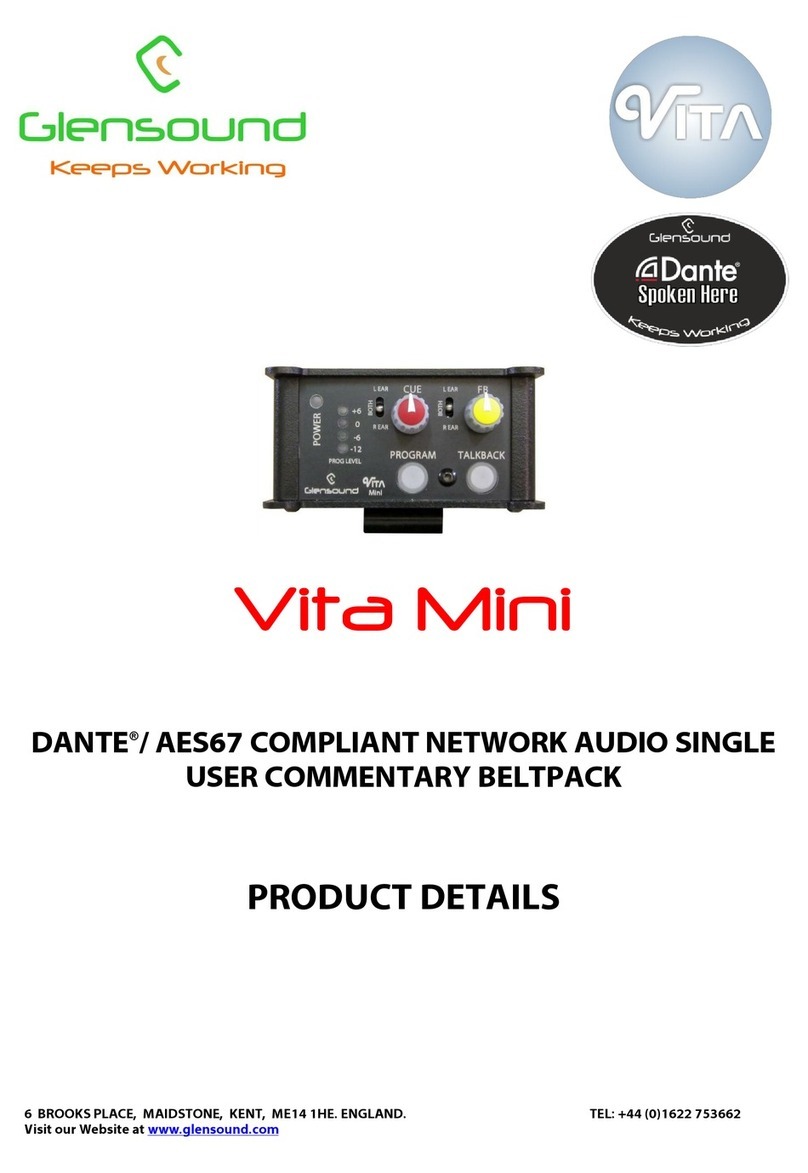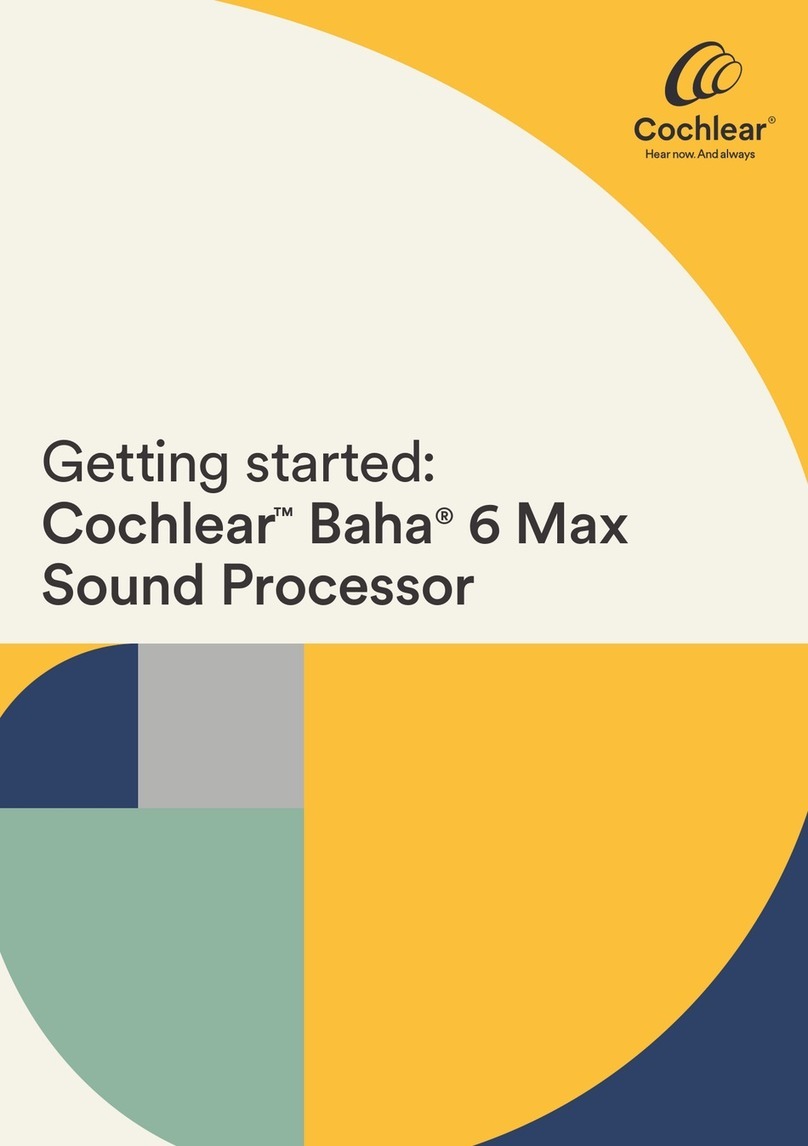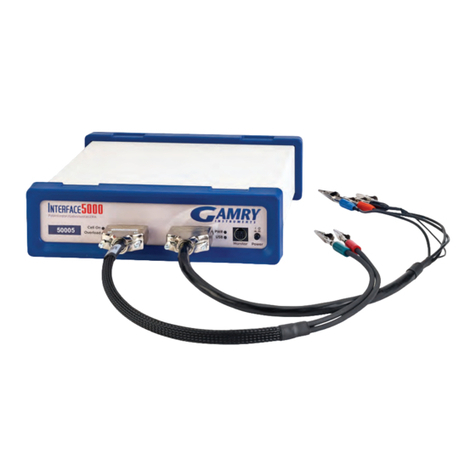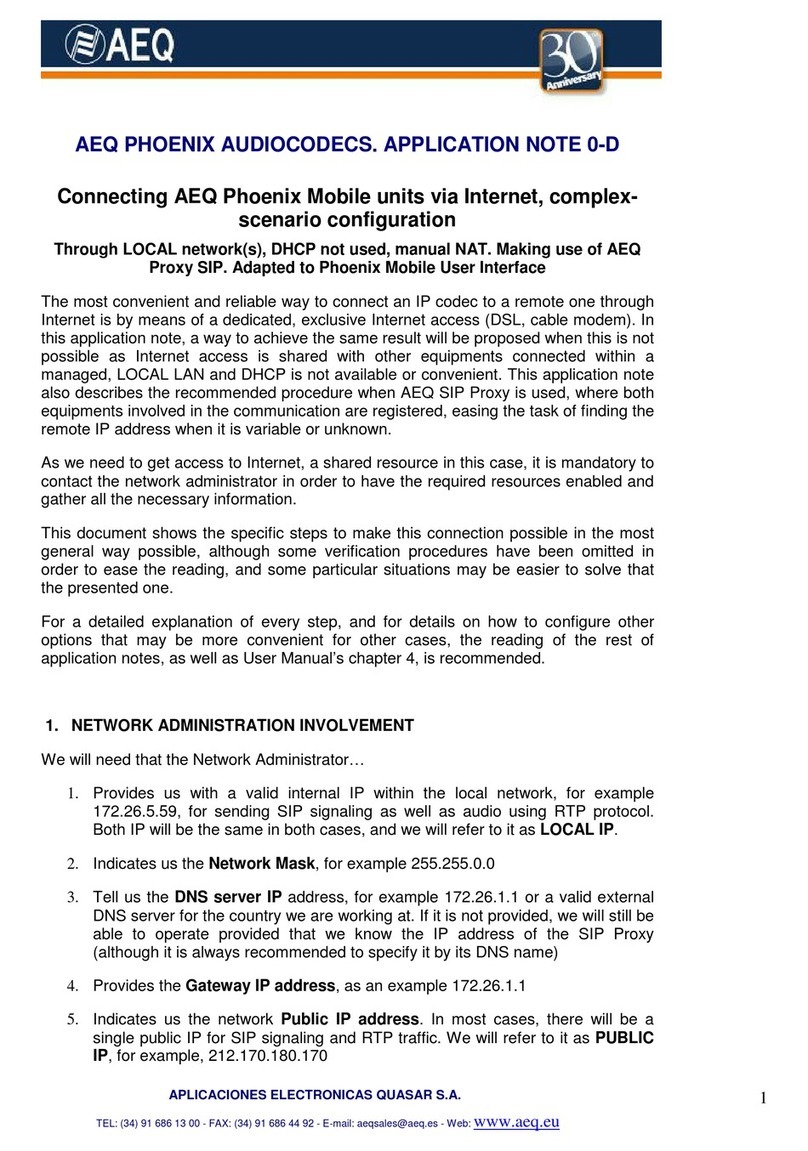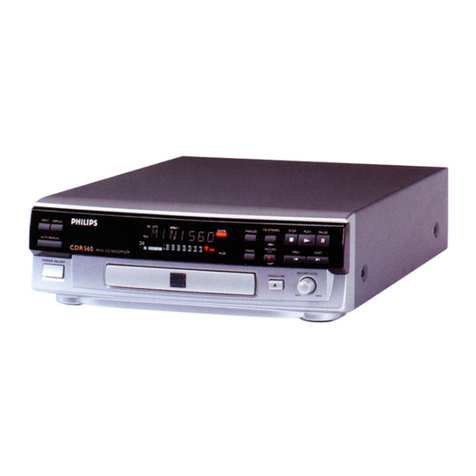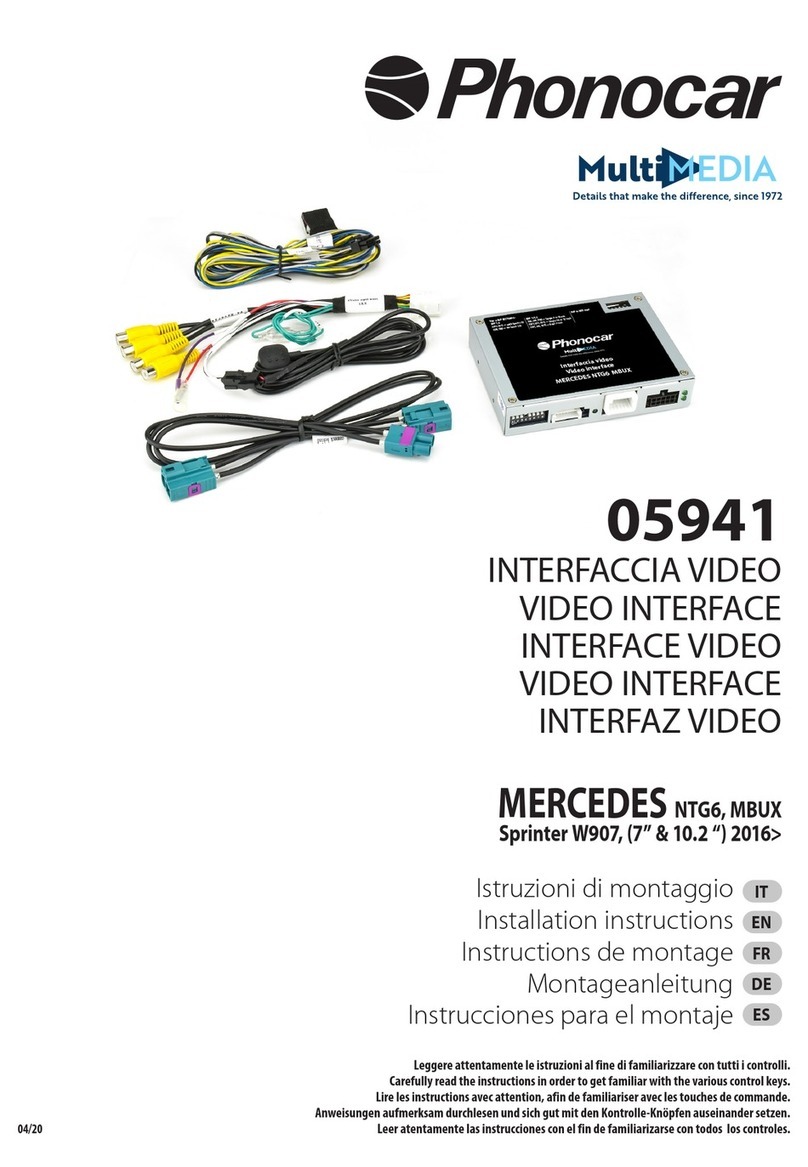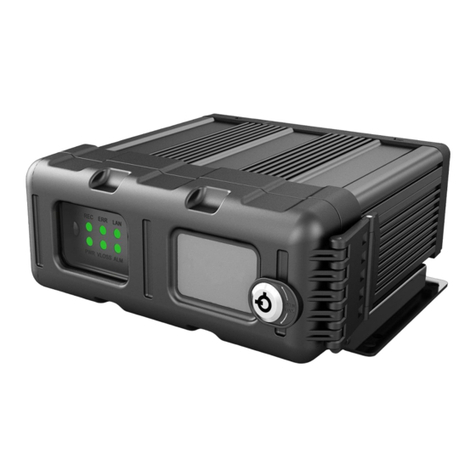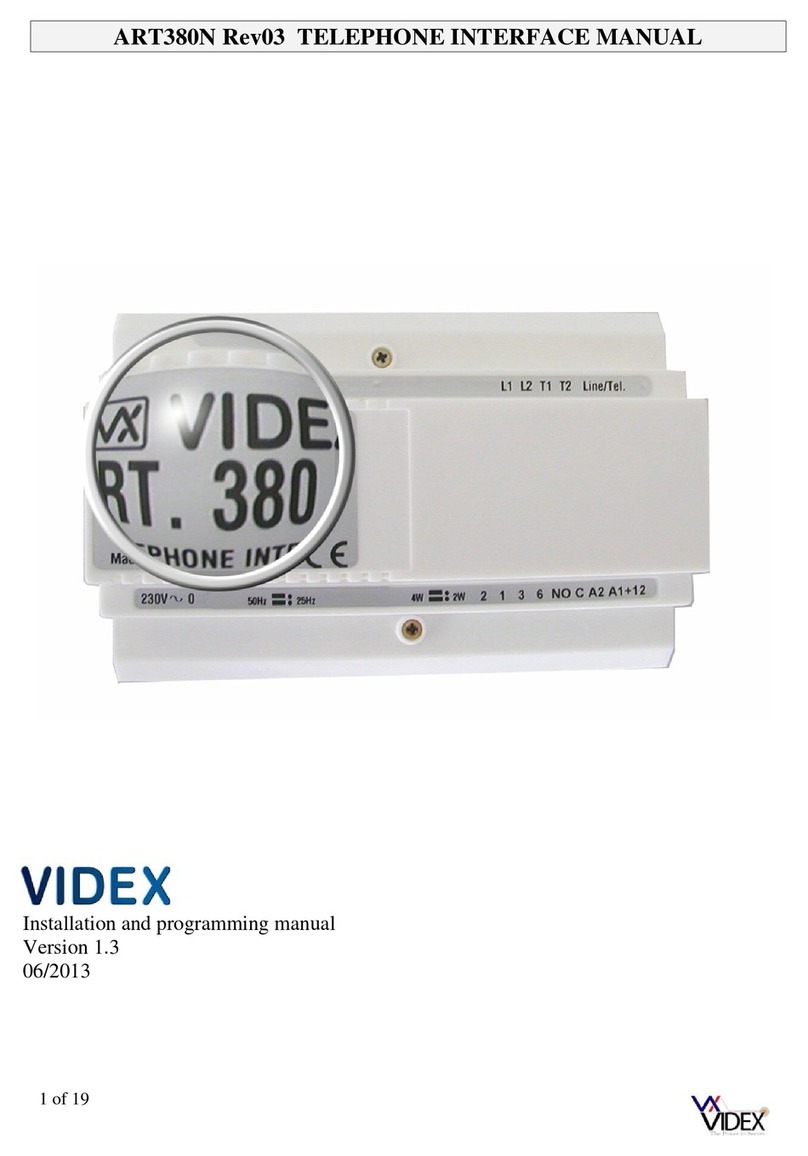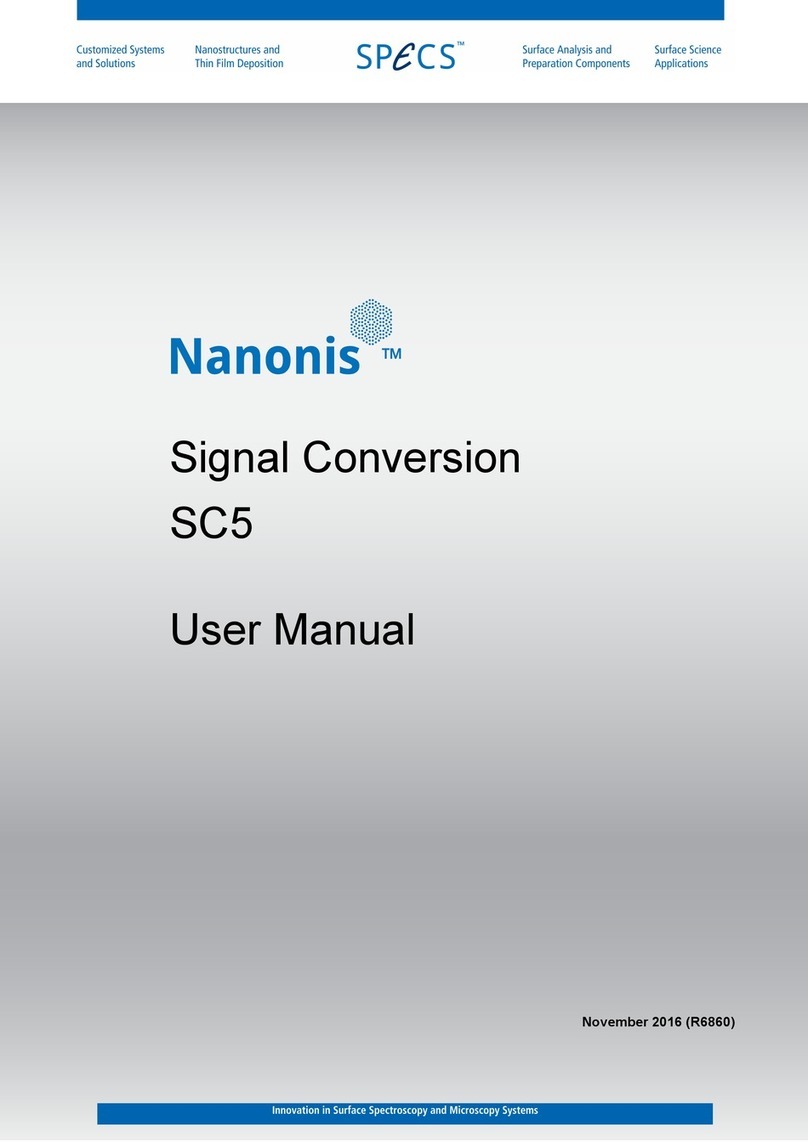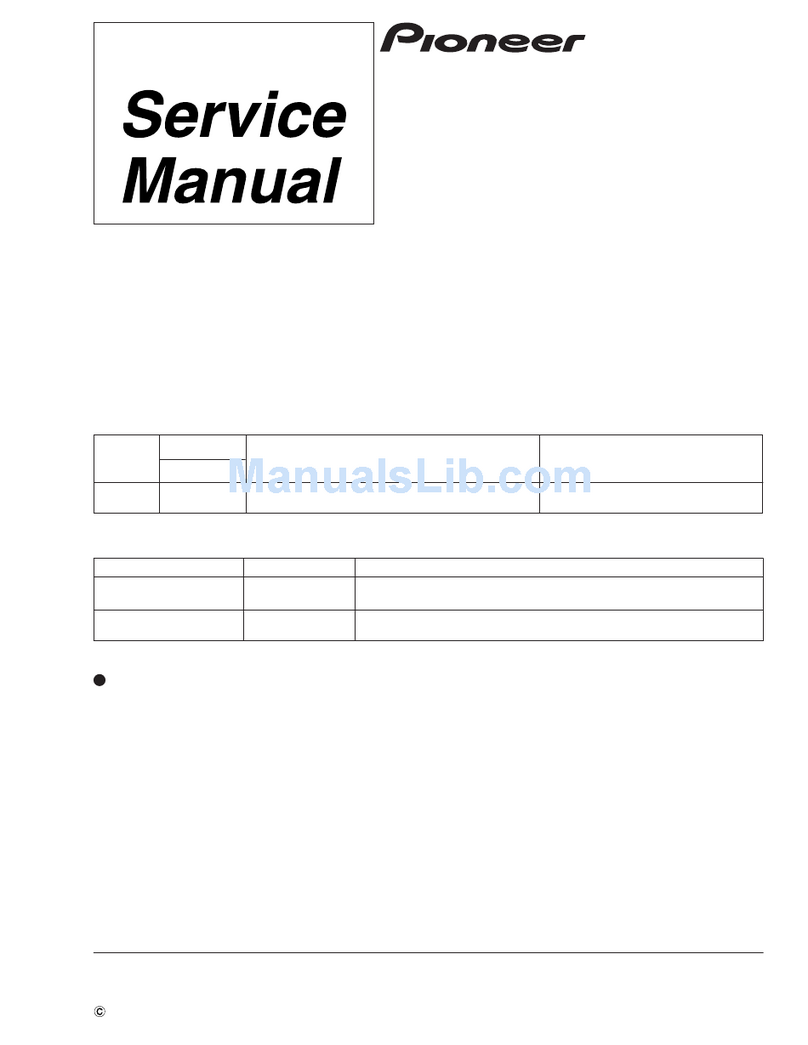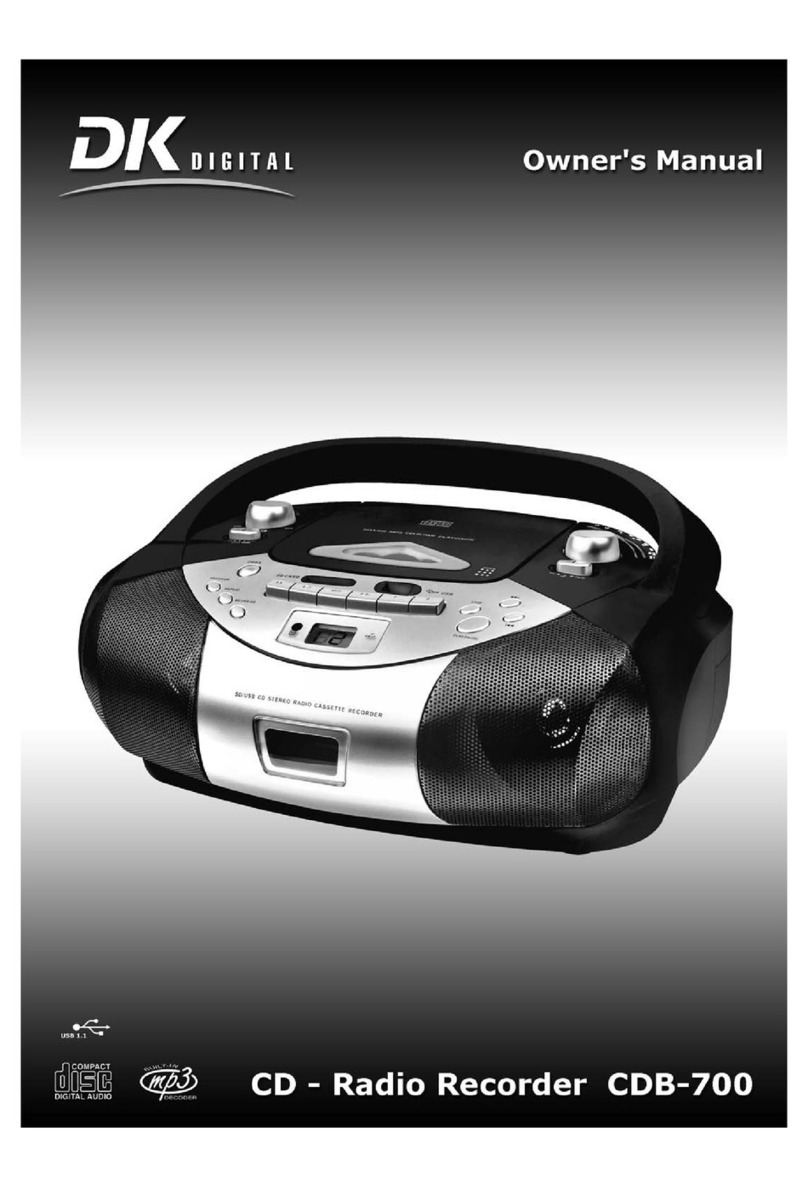Fuji Electric OPC-PRT User manual

March 30, 2017
Part #10949 © 2017 Fuji Electric
OPC-PRT
Multiprotocol Ethernet Interface
Thank you for purchasing the OPC-PRT Multiprotocol Ethernet Interfac e.
•This product is designed to connect the FRENIC-Ace series of inverters to Ethernet
communication networks. Please read this instruction manual thoroughly in order to become
familiar with the proper interface handling, installation and usage procedures.
•Improper handling may inhibit correct operation or cause premature interface failure.
•Please deliver this instruction manual to the end user of the interface, and retain it in an
accessible location.
•For inverter usage instructions, please refer to the applicable inverter instruction manual.
Instruction Manual

1
OPC-PRT Multiprotocol Ethernet Interface Instruction Manual
Part Number 10949
Printed in U.S.A.
©2017 Fuji Electric.
All rights reserved
Fuji Electric reserves the right to make changes and improvements to its products without providing
notice.
Notice to Users
PRODUCTS ARE NOT AUTHORIZED FOR USE AS CRITICAL COMPONENTS IN LIFE-SUPPORT
DEVICES OR SYSTEMS. Life-support devices or systems are devices or systems intended to sustain
life, and whose failure to perform, when properly used in accordance with instructions for use provided in
the labeling and user's manual, can be reasonably expected to result in significant injury.
No complex software or hardware system is perfect. Bugs may always be present in a system of any
size. In order to prevent danger to life or property, it is the responsibility of the system designer to
incorporate redundant protective mechanisms appropriate to the risk involved.

2
Preface
This instruction manual has been prepared to help you connect your FRENIC-Ace inverter to Industrial
Ethernet networks using the OPC-PRT Multiprotocol Ethernet interface card. This instruction manual
does not contain inverter usage instructions. Please refer to this instruction manual in conjunction with
the applicable inverter instruction manual in order to become familiar with the proper handling,
installation and operation of this product. Improper handling or installation procedures may result in
incorrect operation or premature product failure.
Related Publications
Listed below are publications that are necess ary for reference in conjunction with this instruction manual.
•RS-485 User's Manual (24A7-E-0082)
•FRENIC-Ace Instruction Manual (INR-SI47-1733a-E)
•FRENIC-Ace User’s Manual (24A7-E-0043E)
These documents are subject to change without notic e. Please be sure to refer to the most recent
available versions.
Safety precautions
Please read this instruction manual thoroughly prior to proceeding with installation, connections,
operation, or maintenance and inspection. Additionally, ensure that all aspects of the system are fully
understood, and familiarize yourself with all safety information and precautions before operating the
inverter.
Safety precautions in this instruction manual are classified into the following two categories:
Failure to heed the information indicated by this symbol may lead
to dangerous conditions, possibly resulting in death or serious
bodily injuries.
Failure to heed the information indicated by this symbol may lead
to dangerous conditions, possibly resulting in minor or light bodily
injuries and/or substantial property damage.
Failure to heed the information contained under the CAUTION title can also result in serious
consequences. Thes e safety precautions are of utmost importance and must be observed at all times.

3
Installation and Wiring
•To avoid electrical shock, remove all power from the inverter and wait at least five minutes prior to
starting installation. Additionally, confirm that the DC link bus voltage as measured between the P
(+) and N (-) terminals is less than 25 VDC.
•Installation should be performed only by qualified personnel.
•To avoid electrical shock, do not operate the inverter with the front cover or wiring cover removed,
as accidental contact with exposed high-voltage terminals and internal components may occur.
•To prevent explosions or similar damage, ensure that all cables are properly connected to the
correct terminals, and observe all wiring polarity indicators.
•Do not install or operate the interface if it is damaged or has parts missing.
•Prevent conductive items such as screws and metal fragments, or flammable substances such as
oil, lint, paper fibers and sawdust from entering the inverter and interface card enc losure.
•Incorrect handling during installation or removal may cause equipment failure.
•Do not subj ect the cables to scratches, excessive stress, heavy loads or pinching.
•To prevent damage due to electrostatic discharge, always touch a grounded piece of metal prior
to touching any equipment.
•Do not stand on or rest heavy objects on the equipment.
•To prevent burns from hot components, do not touch the inverter while power is on, or for some
time after power is removed.
•Electrical noise may be emitted from the inverter, motor and wires. Always implement appropriate
countermeasures to prevent nearby sensors and devices from malfunctioning due to such noise.
Operation
•To avoid electrical shock, do not open the front cover of the inverter while power is on or while the
inverter is running.
•To avoid electrical shock, do not operate switches with wet hands.
•If the inverter’s function codes are incorrectly configured, or configured without adequate
understanding of the appropriate inverter Instruction Manual and User's Manual, the motor may
rotate with a torque or at a speed not permitted for the machine. Confirm the settings of all
function codes prior to running the inverter.

4
Maintenance, inspection, and parts replacement
•To avoid electrical shock, remove all power from the inverter and wait at least five minutes prior to
starting inspection. Additionally, confirm that the DC link bus voltage as measured between the P
(+) and N (-) terminals is less than 25 VDC.
•Maintenance, inspection, and parts replacement should be performed only by qualified personnel.
•Remove all watches, rings and other metallic objects prior to starting work.
•To avoid electrical shock or other injuries, always use insulated tools.
Disposal
•Contact the local or state environmental agency in your area for details on the disposal of
electrical components and packaging.
Other
•Do not attempt to modify the equipment: doing so may cause electrical shock or injuries.
•For clarity purposes, illustrations in this manual may be drawn with covers or safety guards
removed. Ensure all covers and safety guards are properly installed prior to starting operation.
•Do not perform hi-pot tests on the equipment.
•Performing a data initialization (function code H03) may reset all inverter function codes to their
factory default s ettings. After performing this operation, remember to reenter any custom function
code values prior to starting operation.
Icons
The following icons are used throughout this manual:
Indicates information which, if not heeded, can result in the product not operating to full
efficiency, as well as information concerning incorrect operations and settings which may
result in accidents.
Indicates information that can prove handy when performing certain settings or operations.
Indicates a reference to more detailed information.

5
−TABLE OF CONTENTS −
1PRE-OPERATION INSTRUCTIONS ........................................................... 8
1.1 Product Overview .................................................................................................... 8
1.2 Features and Specifications................................................................................... 8
1.3 Unpacking and Product Confirmation................................................................. 13
1.3.1 Shipment Confirmation ....................................................................................................13
1.3.2 Component Overview ......................................................................................................14
1.4 LED Indicators ....................................................................................................... 15
1.4.1 Standard LEDs ................................................................................................................15
1.4.1.1 Network Status LED .................................................................................................15
1.4.1.2 Module Status LED...................................................................................................15
1.4.2 Ethernet Link/Activity LEDs..............................................................................................15
2INSTALLATION ....................................................................................... 16
2.1 Pre-Installation Instructions ................................................................................. 16
2.2 Installation Procedure ........................................................................................... 16
3INVERTER FUNCTION CODE SETTINGS ............................................... 21
3.1 Inverter Control-Related Settings ........................................................................ 21
3.2 Inverter Reaction to Network Timeout Conditions ............................................ 22
4FUNCTION CODE NUMBERING AND BEHAVIOR .................................. 23
4.1 Register Numbers.................................................................................................. 23
4.2 Scanned Function Codes ..................................................................................... 26
4.3Commonly Used Function Codes ........................................................................ 26
5FUJI CONFIGURATION STUDIO ............................................................. 28
5.1 Overview ................................................................................................................. 28
5.2 General Object Editing Activities......................................................................... 30
5.3 Ethernet Settings ................................................................................................... 31
5.3.1 Authentication..................................................................................................................31
5.3.2 Network Configuration .....................................................................................................31
5.4 Internal Logic Settings .......................................................................................... 31
5.4.1 Fail-safe Values ...............................................................................................................31
5.4.1.1 Overview ..................................................................................................................31
5.4.1.2 Timeout Time ...........................................................................................................32
5.4.1.3 Timeout Object Configuration ...................................................................................32
5.4.2 Fail-safe Example ............................................................................................................32
5.5 Discovery over Ethernet ....................................................................................... 33
5.6 Manage Device Parameters .................................................................................. 33
5.7 Backup and Restore Parameters ......................................................................... 34
5.8 Restore Factory Settings ...................................................................................... 35
5.9 Help ......................................................................................................................... 35
6EMBEDDED WEB SERVER..................................................................... 36
6.1 Overview ................................................................................................................. 36
6.2 Monitor Tab ............................................................................................................ 36
6.2.1 Information Window .........................................................................................................36

6
6.2.2 Function Code Group Selection List.................................................................................37
6.2.3 Function Code List...........................................................................................................37
6.2.4 Function Code List Filter ..................................................................................................38
6.2.5 Radix Selection................................................................................................................38
6.3 Dashboard Tab....................................................................................................... 39
6.3.1 Information Window .........................................................................................................39
6.3.2Virtual Keypad .................................................................................................................40
6.3.3 Gauge Window Navigation...............................................................................................41
6.3.4 Gauge Window Configuration ..........................................................................................41
6.3.5 Submitting Changes ........................................................................................................44
6.4 Customizing the Embedded Web Server ............................................................ 45
6.4.1 Customization Overview ..................................................................................................45
6.4.2 XTPro Overview ..............................................................................................................45
6.4.3 XTPro Web Browser-Based Implementation ....................................................................46
6.4.4 XTPro HMI-Based Implementation...................................................................................47
6.4.5 XTPro Supported Commands ..........................................................................................47
7FILE SYSTEM .......................................................................................... 48
7.1 Overview ................................................................................................................. 48
7.2 USB with Windows Explorer ................................................................................ 48
7.3 FTP with Windows Explorer ................................................................................. 49
7.4 Loading New Web Server Content....................................................................... 49
8FIRMWARE.............................................................................................. 51
8.1 Overview ................................................................................................................. 51
8.2 Update Procedure.................................................................................................. 51
9PROTOCOL-SPECIFIC INFORMATION................................................... 52
9.1 Modbus/TCP ........................................................................................................... 52
9.1.1 Overview .........................................................................................................................52
9.1.2 Holding & Input Registers ................................................................................................52
9.1.3 Coil & Discrete Input Mappings ........................................................................................52
9.1.4 Connection Timeout Options............................................................................................53
9.1.5 Node Settings ..................................................................................................................54
9.1.6 Holding/Input Register Remap Settings ...........................................................................54
9.2 EtherNet/IP ............................................................................................................. 55
9.2.1 Overview .........................................................................................................................55
9.2.2 Server Settings ................................................................................................................55
9.2.3 Connection Timeout Options............................................................................................56
9.2.4 Generic Class 1 I/O Produced and Consumed Data Settings ...........................................56
9.2.5 Generic Class 1 (I/O) Connection Access ........................................................................57
9.2.6 AC/DC Drive Profile Class 1 (I/O) Connection Access .....................................................57
9.2.7 Explicit Messaging Via Get/Set Attribute Single Services .................................................59
9.2.8 Explicit Messaging Via Data Table Read/Write Services ..................................................60
9.2.9 Inverter Function Code Access Tag Format .....................................................................60
9.2.10 ControlLogix Examples: Setup .........................................................................................60
9.2.11 ControlLogix Example: EDS Add-On Profile (AOP) ..........................................................62
9.2.11.1 ControlLogix Example: EDS Add-On Profile (AOP) Generic I/O Messaging ..............64
9.2.11.2 ControlLogix Example: EDS Add-On Profile (AOP) AC/DC Drive Profile ...................65
9.2.12 ControlLogix Example: I/O Messaging .............................................................................67
9.2.12.1 ControlLogix Example: Generic Default I/O Add-On Instruction ................................69
9.2.12.2 ControlLogix Example: AC/DC Drive Profile Add-On Instruction ...............................71
9.2.13 ControlLogix Example: Read a Block of Function Codes..................................................74

7
9.2.14 ControlLogix Example: Reading and Writing MSG Instructions ........................................78
9.3 Allen Bradley CSP (PCCC).................................................................................... 79
9.3.1 Overview .........................................................................................................................79
9.3.2 Explicit Messaging Via Read/Write Services ....................................................................79
9.3.3 Inverter Function Code File Number Offset Format ..........................................................79
9.3.4 SLC-5/05 Example: Read Function Codes.......................................................................81
9.3.5 SLC-5/05 Example: Reading and Writing.........................................................................86
9.4 BACnet/IP ............................................................................................................... 87
9.4.1 Protocol Implementation Conformance Statement ...........................................................87
9.4.2 Default Supported Objects ...............................................................................................91
9.4.3 Default Supported Object Details .....................................................................................92
9.4.4 Server Settings ................................................................................................................93
9.4.5 Node Settings ..................................................................................................................93
9.4.6 Device Object Settings.....................................................................................................93
9.4.7 BACnet Object Settings ...................................................................................................93
9.4.8 Analog Input Object Settings............................................................................................93
9.4.9 Analog Output Object Settings .........................................................................................94
9.4.10 Analog Value Object Settings ..........................................................................................94
9.4.11 Binary Input Object Settings.............................................................................................94
9.4.12 Binary Output Object Settings ..........................................................................................95
9.4.13 Binary Value Object Settings ...........................................................................................96
9.4.14 Multi-state Input Object Settings ......................................................................................97
9.4.15 Multi-state Output Object Settings....................................................................................97
9.4.16 Multi-state Value Object Settings .....................................................................................97
9.5 PROFINET IO.......................................................................................................... 98
9.5.1 Overview .........................................................................................................................98
9.5.2 Device Settings................................................................................................................98
9.5.3 Connection Timeout Options............................................................................................98
9.5.4 Cyclic I/O Produced and Consumed Data Access Settings ..............................................98
9.5.5 PROFIdrive Profile.........................................................................................................100
9.5.5.1 PROFIdrive Standard Telegram 1...........................................................................100
9.5.5.2 PROFIdrive Control and Status Words ...................................................................100
9.5.5.3 PROFIdrive Reference Speed Setpoint and Actual Speed ......................................101
9.5.5.4 PROFIdrive State Diagram .....................................................................................102
9.5.5.5 PROFIdrive-Specific Parameters ............................................................................103
9.5.6 Acyclic Data Access ......................................................................................................103
9.5.7 TIA Portal (STEP 7) Hardware Configuration Example...................................................103
9.5.7.1 Register the GSDML File ........................................................................................103
9.5.7.2 Add the Device to the Configuration .......................................................................105
9.5.7.3 Select the IO Controller ..........................................................................................105
9.5.7.4 Assign IO Module ...................................................................................................105
9.5.7.5 Configure the Device Properties .............................................................................106
9.5.7.6 Online Device Discovery and Configuration ............................................................107
9.5.7.7 Save the Configuration ...........................................................................................108
9.5.8 GE Proficy Configuration Example .................................................................................108
9.5.8.1 Register the GSDML File ........................................................................................108
9.5.8.2 Add the Device to the Configuration .......................................................................110
9.5.8.3 Assign IO Module ...................................................................................................110
9.5.8.4 Configure the Device Properties .............................................................................111
9.5.8.5 Save the Configuration ...........................................................................................112
10 TROUBLESHOOTING ....................................................................... 113

8
1 PRE-OPERATION INSTRUCTIONS
1.1 Product Overview
The OPC-PRT Multiprotoc ol Ethernet interface allows information to be transferred seamlessly between
a FRENIC-Ace inverter and several Ethernet-based fieldbus networks with minimal configuration
requirements. The interface installs directly onto the inverter, and presents two RJ-45 jacks with an
embedded 10BASE-T/100BASE-TX Ethernet switch for connection to the Ethernet network. In addition
to the supported fieldbus protocols, the interface also hosts a fully-customizable embedded web server,
which provides access to inverter information via a standard web browser for remote monitoring and
control.
Before using the interface, please familiarize yourself with the product and be sure to thoroughly read
the instructions and precautions contained in this manual. In addition, please make sure that this
instruction manual is delivered to the end user of the interface, and keep this instruction manual in a safe
place for future reference or unit inspection.
Note that different interface firmware versions may provide varying levels of support for the various
protoc ols. W hen using this manual, therefore, always keep in mind the release date of the firmware
version running on your interface as it must correspond to this manual’s respective release date in order
for all documented aspects to apply.
Supported Protocols
The interface currently provides server support for the following fieldbus protoc ols:
•Modbus/TCP Server
•EtherNet/IP Server (DLR node)
•Allen Bradley CSP Server (also known as “PCCC” and “AB Ethernet”)
•BACnet/IP Server
•PROFINET IO Device (MRP client)
1.2 Features and Specifications
Table 1: Features
Item
Description
Simultaneous Protocols
Supports all standard unmodified Ethernet (SUE) protocols
simultaneously
Fuji Configuration Studio
Graphical user interface for discovery, configuration, and firmware
update
WEB Server (HTTP)
Access all parameters, dashboard with gauges, customizable with
XTPro
Communication Loss Detection
Configurable actions for “fail-safe” conditions
Field Upgradeable
Firmware updates automatically handled by the studio
Parameter Management
Advanced management of parameter access and scan priority
Parameter Backup and Restore
Drive cloning

9
Table 2: General Hardware Specifications
Item
Description
Power Supply
Directly powered by the inverter
LED Indicators
Module Status, Network Status, 2 x Ethernet Link/Activity
USB Port
USB 2.0, mini-B 5-pin
Table 3: Ethernet Hardware Specifications
Item
Description
Number of Ports
2 (internal switch)
Standard
IEEE 802.3 10BASE-T/100BASE-TX Ethernet compliant
Communication Speed and
Duplex
100Mbps full (auto sense optimal speed and duplex)
Connector Type
RJ-45 Shielded
Auto MDI-X
Yes (supports all straight-through and cross-over cables)
Cable Type
CAT5-type 8-conductor UTP patch cables
Cable Length
100m per segment max
Topologies
Star/Tree, Linear/Bus/Daisy-chain, Ring (MRP)
Table 4: Modbus/TCP Specifications
Item
Description
Conformance Class
Class 0, Class 1 (partial), Class 2 (partial)
Read Function Codes
Read coils (1), Read input status (2), Read multiple registers (3),
Read input registers (4), Diagnostics (8)
Write Function Codes
Write coil (5), Write single register (6), Force multiple coils (15),
Write multiple registers (16)
Number of Connections
8
Max Read Register Size
125 registers
Max W rite Regist er Size
123 registers
Register Data Type
16-bit integer
Unit (slave) ID
Ignored, echoed in response
TCP Port
502
Response Time
Min 160us, Typically less than 1ms

10
Table 5: EtherNet/IP Specifications
Item
Description
Conformance Tested
ODVA EtherNet/IP Dec laration of Conformity (CT-13)
Product Type Code
2 (AC Drive)
AC/DC Drive Profile
Yes
UCMM
Yes
Class 3 (Explicit) Messaging
Yes
Class 1 (Implicit I/O) Messaging
Yes
Class 1 Unicast T→O
Yes
Class 1 Multicast T→O
Yes
Number of Connections
16 (Total for both Class 1 and Class 3)
RPI
Min 1ms
I/O Input Size
Max 32 input words, user configurable
I/O Output Size
Max 32 output words, user configurable
Generic (User Configurable)
Assembly Instances
100 (input) and 150 (output)
AC/DC Drive Profile Ass embly
Instances
20 (input) and 70 (output), 21 (input) and 71 (output)
Data Table Read/Write
Yes
DLR
Device Level Ring Node
Class 1 UDP Port
2222 (0x08AE)
Explicit Messaging Port
44818 (0xAF12)
Explicit Messaging Response
Time
Min 160us, Typically less than 1ms

11
Table 6: Allen Bradley CSP (PCCC) Specifications
Item
Description
Read Services
PLC5 Read (DF1 protocol typed read, 0x68) ,
PLC5 Word Range Read (DF1 protocol word range read, 0x01),
SLC Read (DF1 protocol protected typed logical read
with three address fields, 0xA2)
Write Services
PLC5 Write (DF1 protocol typed write, 0x67) ,
PLC5 Word Range Read (DF1 protocol word range write, 0x00),
SLC Read (DF1 protocol protected typed logical write
with three address fields, 0xAA)
Data Type
16-bit Integer
File Type
N (Integer)
Logical ASCII Addressing
Yes
Logical Binary Addressing
Yes
Max Read Size
240 bytes (120 16-bit Integers)
Max W rite Size
240 bytes (120 16-bit Integers)
Table 7: BACnet/IP Specifications
Item
Description
BACnet IP
Annex J
Protocol Revision
2
Standard Device Profile
(Annex L)
BACnet Application Specific Controller (B-ASC)
BACnet Interoperability Building
Blocks (BIBB)
ReadProperty-B (DS-RP-B), ReadPropertyMultiple-B (DS-RPM-B),
WriteProperty-B (DW -WP-B), Dynamic Device Binding-B (DM-
DDB-B), Dynamic object Binding-B (DM-DOB-B)
Segmentation
No
Max APDU Length
1444 bytes
Character Sets
ANSI X3.4
Object Types
Analog Output, Analog Input, Analog Value, Binary Output, Binary
Input, Binary Value, Multi-state Output, Multi-state Input, Multi-state
Value
Priority Array
Yes
UDP Port
47808 (0xBAC0, configurable)
Response Time
Min 160us, Typical less than 1ms

12
Table 8: PROFINET Specifications
Item
Description
Conformance Tested
PROFINET V2.31 Certificate
Protocol Level
RT (real-time)
RT Conformance Class
Class B
Netload Class
III
I/O Cycle Time
Min 1ms
I/O Input Size
Max 32 input words, user configurable
I/O Output Size
Max 32 output words, user configurable
MRP
Media Redundancy Protocol Client
DCP
Discovery, set station name, set IP address
LLDP
Yes
I&M
I&M0
Alarms
Plug, Pull
Number of Controllers
Allows access to only 1 controller
Table 9: Applicable Inverters
Series
Type
Capacity
ROM version
FRENIC-Ace
FRN□□□E2□-□□
All capac ities
0300 or higher
Table 10: Environmental Specifications
Item
Description
Operating Environment
Indoors, less than 1000m above s ea level, do not expose to direct
sunlight or corrosive / explosive gasses
Operating Temperature
-10 ∼+50°C (+14 ∼+122°F)
Storage Temperature
-40 ∼+85°C (-40 ∼+185°F)
Relative Humidity
20% ∼90% (without condensation)
Vibration
5.9m/s2(0.6G) or less (10 ∼55Hz)
Cooling Method
Self-cooled
RoHS (Lead free)
Yes

13
1.3 Unpacking and Product Confirmation
1.3.1 Shipment Confirmation
Check the enclosed items. Confirm that the correct quantity of each item was received, and that no
damage occurred during shipment.
•OPC-PRT interface board with spacer and captive M3 x 12mm screw in lower-right corner (refer to
Figure 1).
•One separate M3 x 6mm mounting screw (see Figure 2).
•Type A male to mini-B male USB interface cable (see Figure 3).
Figure 1: OPC-PRT Interface Board
Figure 2: M3 x 6mm Mounting Screw
Figure 3: USB Interface Cable

14
1.3.2 Component Overview
Figure 4 provides an overview of the important interface card components.
Positioning Notch
Aligns with the positioning key on the inverter chassis to ensure that the interface card is installed into
the correct communication port (refer to section 2.2).
Port 1 and Port 2 Ethernet Jacks
Either jack can freely be used in star topology networks (with external switch). In linear topologies, a
series of cards can be connected together by daisy-chaining one of the ports to the next inverter in line.
In ring topologies, MRP (Media Redundancy Protocol) must be supported by all devices on the network.
Standoff Mounting Hardware
The provided M3 x 12mm and M3 x 6mm screws are used to secure the card to the standoffs located on
the inverter’s control board. Refer to section 2.2.
Inverter Control Board Connector
Attaches to the inverter’s connector board, which may vary depending on the inverter model.
USB Port
USB 2.0 port with mini-B connector. Used to access the card via the Fuji Configuration Studio (refer to
section 5) and as a USB flash drive (refer to section 7).
Module Status and Network Status LEDs
These LEDs indicate the current status of the interface card and protocols in use. Refer to section 1.4.
Ethernet Link and Activity LEDs
One set of LEDs are provided for each Ethernet port. These LEDs provide insight into the Ethernet
network’s status and activity. Refer to section 1.4.
Figure 4: OPC-PRT Component Overview
Standoff mounting hole
Inverter control
board connector
USB port
Module Status LED
Network Status LED
Port 1 Link/Activity LED
Port 2 Link/Activity LED
Spacer and captive screw
MAC Address
Port 1 Ethernet jack
Port 2 Ethernet jack
Positioning notch

15
1.4 LED Indicators
1.4.1 Standard LEDs
1.4.1.1 Network Status LED
LED Activity
Status
Note
Off
Device Off
The inverter power is off
Green Blink /
Red Blink
Startup Startup blink sequence
Green Blink
No Connection
EtherNet/IP connection is not established
Green Off
No Connection
PROFINET connection is not established
Green On
Connection
Established
EtherNet/IP or PROFINET connection is established
1.4.1.2 Module Status LED
LED Activity
Status
Note
Off
Device Off
The inverter power is off
Green Blink /
Red Blink
Startup Startup blink sequence
Green On
Device On
Normal status
Green Blink
Discovery
identification
PROFINET discovery and identification (DCP)
Red Blink Error Code
Record the error c ode sequence and contact
technical support
1.4.2 Ethernet Link/Activity LEDs
LED Activity
Status
Note
Green On Link
A valid Ethernet link exists: communication is
possible on this port
Green Off No Link
A valid Ethernet link does not exist: communication is
not possible on this port
Red Blink Activity
Indicates when a packet is transmitted or received on
this port

16
2 INSTALLATION
2.1 Pre-Installation Instructions
•To avoid electrical shock, remove all power from the inverter and wait at least five minutes prior to
starting installation. Additionally, confirm that the DC link bus voltage as measured between the P
(+) and N (-) terminals is less than 25 VDC.
•Installation should be performed only by qualified personnel.
•To avoid electrical shock, do not operate the inverter with the front cover or wiring cover removed,
as accidental contact with exposed high-voltage terminals and internal components may occur.
•To prevent explosions or similar damage, ensure that all cables are properly connected to the
correct terminals, and observe all wiring polarity indicators.
•Only one additional option card may be used when the OPC-PRT is installed in the inverter. If
two additional option cards are required, please consult with the factory first to confirm
compatibility.
2.2 Installation Procedure
Before installing the interface card, perform all wiring for the main circuit terminals and
control circuit terminals.
1. Remove the front cover from the inverter to expose the control printed circuit board (control PCB).
Install the interfac e card according to the inverter capac ity as shown in Figure 5, Figure 6, or
Figure 7. Otherwis e, refer to the FRENIC-ACE Instruction Manual or contact Fuji for the
appropriate installation instructions.
To remove the front cover, refer to the FRENIC-Ace Instruction Manual, Section 2.2.

17
Figure 5: Installation for 15 kW and Smaller Inverters
Interface Card
Connector Board
Option Case

18
Figure 6: Installation for 18.5 kW to 22 kW Inverters
Interface Card
Connector Board
Option Case

19
Figure 7: Installation for 30 kW and Larger Inverters
2. Engage connector CN1 (on the back of the interface card) into the connector on the c onnector
board. Ensure that the connectors are fully engaged.
Ensure that the interface card is fully aligned and seated into the communication
port. Failure to do so may lead to insufficient connector insertion and result in
contact failure.
3. Secure the interface card to the connector board PCB by first tightening the captive M3 x 12mm
screw into the inverter standoff located at the lower-right hand corner of the interface card. Next,
install and tighten the included M3 x 6mm screw into the standoff mounting hole located at the
upper-left hand corner of the interface card.
4. Connect the network cables as necessary. Insert the Ethernet cables into the Ethernet jacks,
making sure that they are fully s eated. Ensure that the cables are routed in such a way that they
Interface Card
Connector Board
Option Case
Table of contents
Other Fuji Electric Recording Equipment manuals

Fuji Electric
Fuji Electric OPC-VG1-PMPG User manual

Fuji Electric
Fuji Electric OPC-G1-ETH User manual

Fuji Electric
Fuji Electric OPC-VG1-ESX User manual

Fuji Electric
Fuji Electric OPC-E1-CCL User manual
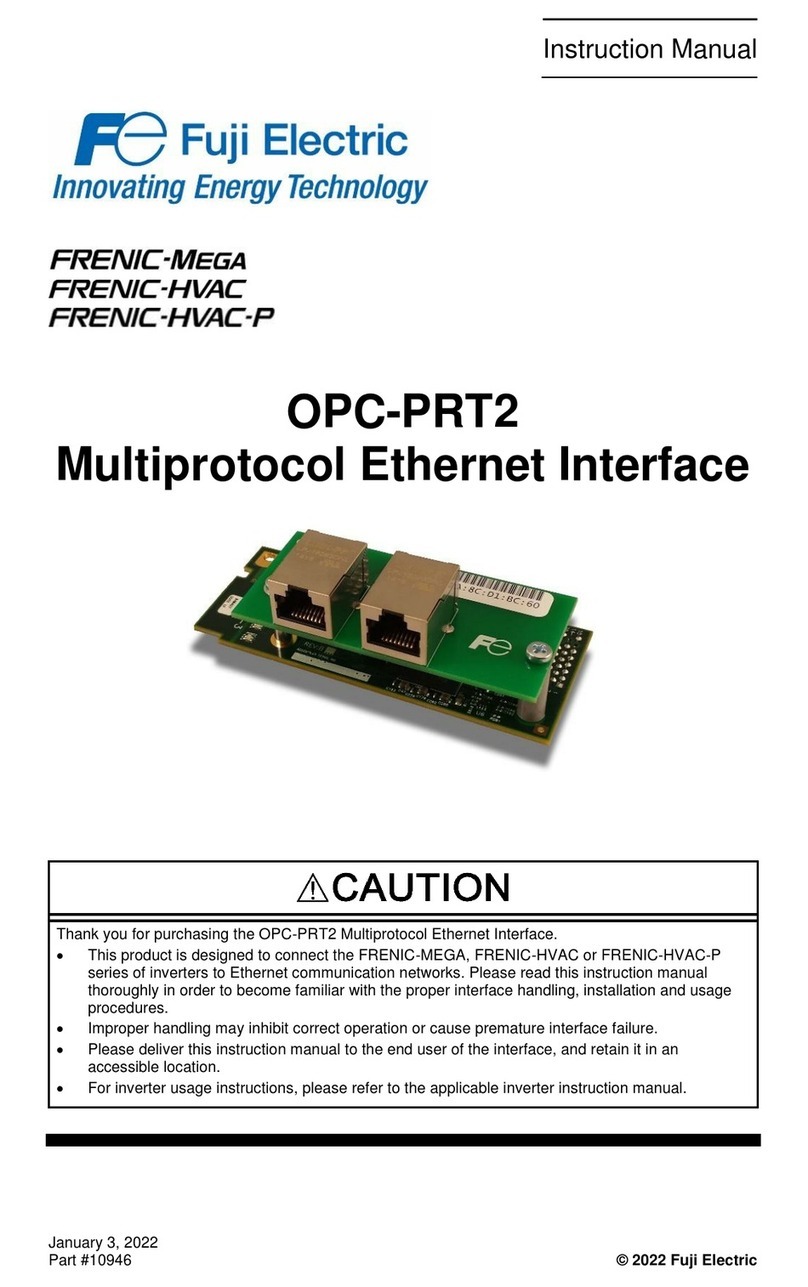
Fuji Electric
Fuji Electric OPC-PRT2 User manual
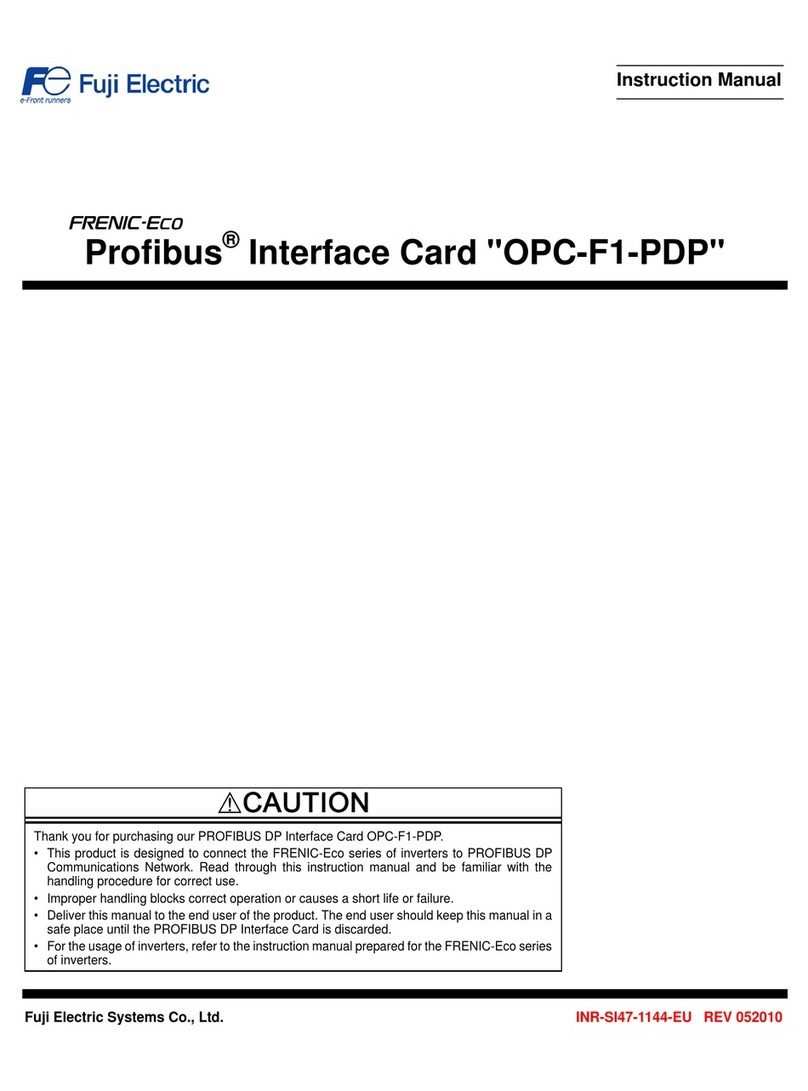
Fuji Electric
Fuji Electric Profibus OPC-F1-PDP User manual
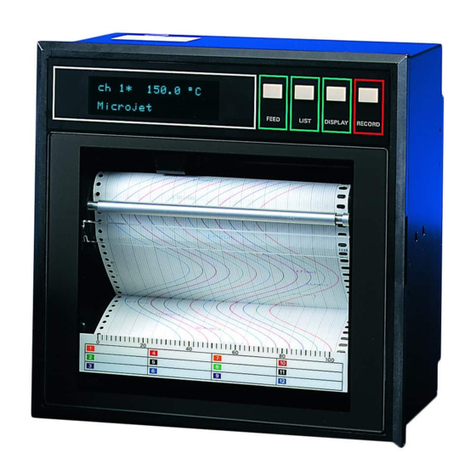
Fuji Electric
Fuji Electric PHA User manual
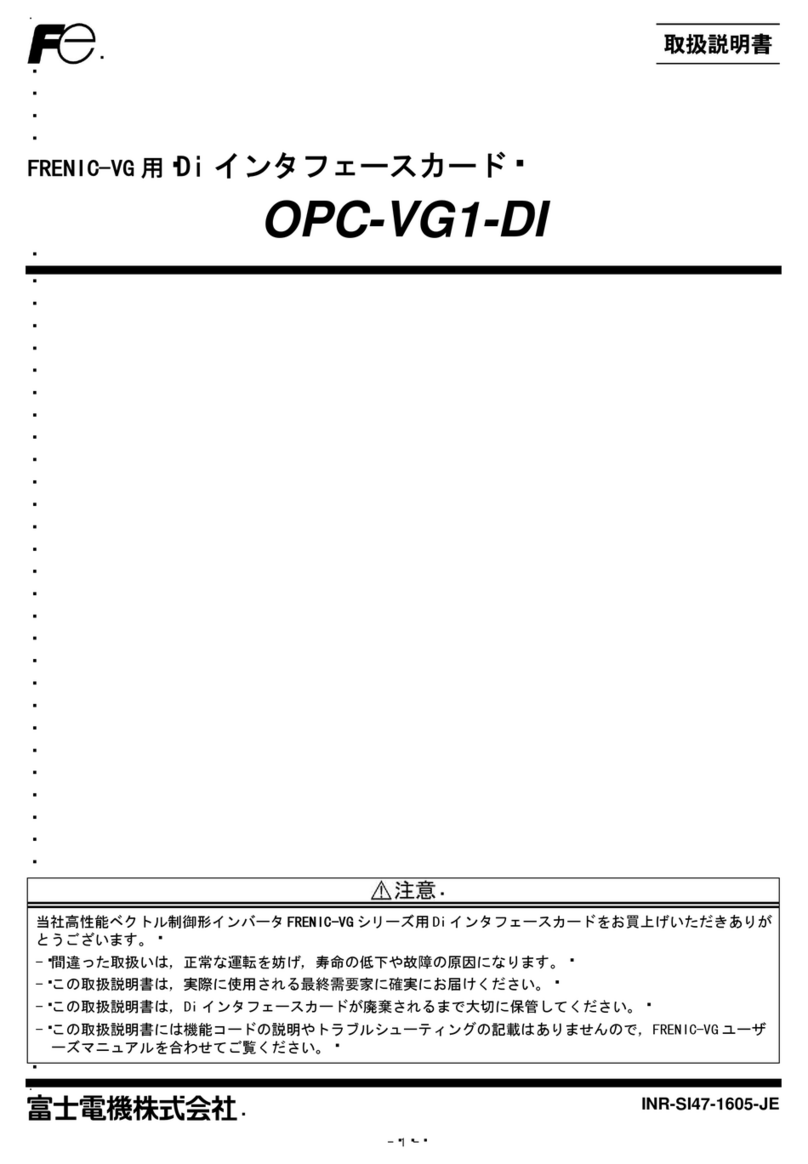
Fuji Electric
Fuji Electric OPC-VG1-DI User manual

Fuji Electric
Fuji Electric OPC-VG1-CCL User manual
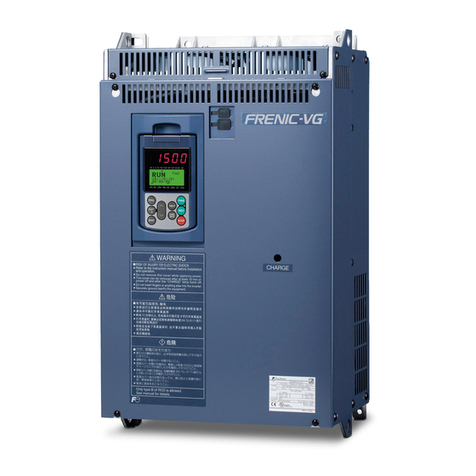
Fuji Electric
Fuji Electric OPC-VG1-TL User manual

